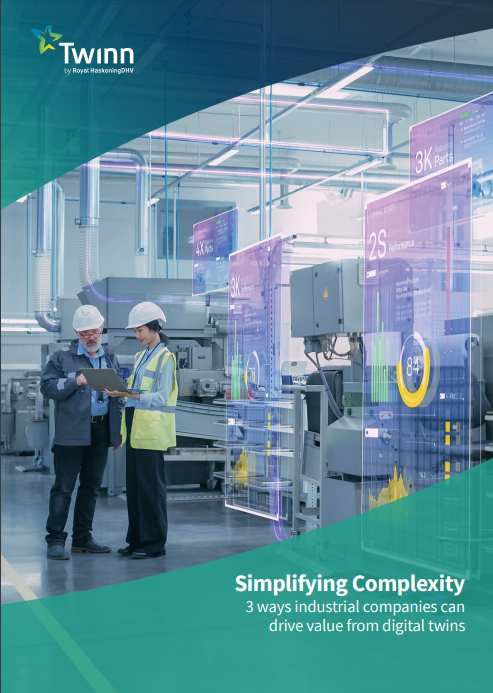How manufacturers can unlock sustainability and profitability

Amid rising energy prices and net-zero policymaking, manufacturers face a significant challenge: how to balance decarbonisation with profitability. After all, environmental drivers are just one element in a complex operating environment that encompasses rising costs of labour, materials and transport.
Digitalisation is key to cost-efficient decarbonisation
It’s no secret that manufacturers must invest in technology to help cut resource consumption, reduce waste and tap into renewable energy. According to a recent survey from manufacturing association Make UK, 23% of companies have already invested in digital technologies to help decarbonise, and 24% plan to do so.
But what technologies should you invest in? What results will you get – in terms of sustainability and ROI? And what will be the investments’ operational impact?
You need clarity on questions like these to get the right results – in terms of sustainability and profitability.
That’s where predictive simulation comes in.
Predictive simulation is the science of creating accurate, virtual models to represent the behaviour of real-life processes
With predictive simulation, you have a virtual model – a digital twin – of your assets, operations and processes. That way, you can replicate real-life business problems and experiment with ‘what-if’ scenarios to find the best solution.
This brings key benefits for driving your sustainability agenda in a cost-conscious way:
- End-to-end view – You can model every aspect of a manufacturing process from raw materials to finished product, meaning you can understand the impact of potential efficiency improvements. After all, there’s no point changing one element of the process if it has a negative knock-on effect down the line
- Business case validation – You can assess the financial implications of adopting sustainable practices, from initial investment through to long-term savings
- Optimisation – You can test different scenarios in the virtual environment, for example exploring the impact of using renewable energy sources, adjusting production schedules or upgrading equipment
- Risk mitigation – Simulation can predict the risks associated with sustainability initiatives. By understanding potential bottlenecks or disruptions, you can proactively address challenges
Sustainability use cases for predictive simulation
How does predictive simulation help with real-world sustainability applications?
It all starts with the questions you’re looking to answer.
Here are key questions at the nexus of sustainability and profitability – and predictive simulation can help answer them all:
Driving the digital transformation agenda
- What carbon reduction strategies can we deploy across the enterprise?
- What are the financial and operational costs associated with various environmental strategies?
- How can we better track and monitor our environmental impact across operations, from raw materials to finished products?
- How can we optimise manufacturing processes to increase efficiency and reduce waste?
De-risking capital expenditure and continuous improvement projects
- Which investments in automation/Industry 4.0 will deliver the greatest carbon/energy/resource savings?
- What’s the best approach to investing in eco-efficient factories?
- How can we use advanced analytics to minimise carbon footprint and operational costs?
- How can we minimise water and steam usage during changeovers to minimise energy consumption?
Streamlining operations
- What is our energy performance across operations?
- What’s the best way to minimise carbon emissions and energy/water consumption while balancing costs?
- Many of the world’s leading car manufacturers have used our Twinn Witness predictive simulation software to drive process optimisations that reduce waste in the paint shop (leading to cost savings and a smaller environmental footprint). Other use cases include optimising HVAC systems to cut energy consumption and finding the most cost-efficient way to integrate solar PV.
Take the next step towards balancing sustainability and profitability
Using predictive simulation, you can uncover detailed insights on the effects of process changes and investments in a virtual environment, so you can make evidence-based decisions in the real world.
This eliminates uncertainty around decarbonisation investments because you’re de-risking decision-making. Essentially, you have a streamlined way of driving sustainability without worrying about expensive surprises down the line.
Driving value from digital twins

![[object Object] [object Object]](https://www.royalhaskoningdhv.com/-/media/images/employees-profile-pics/j/jones-steve.png?h=500&iar=0&w=500&hash=6042852F49EB5B262D166007FF7D4C59)